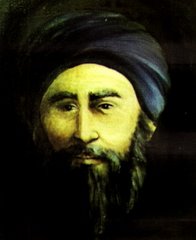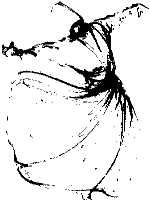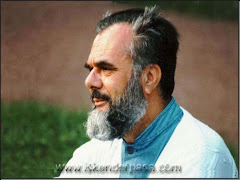The President of the NZ Police Association, Greg O'Connor, was reported by NZPA on 5 April as suggesting that the tiny minority of women who choose to wear the burqa shouldn't be allowed to drive in New Zealand.
Some Muslim women are understandably upset with his comment as reported. Surely it isn't for the police to seek to control what women wear. Further, there is no empirical evidence to support the notion that women in burqa pose a danger to themselves or other road users.
Indeed, where identification of a driver needs to take place, it can in most instances be done by a female police officer, thereby not compromising the burqa-wearer's religious scruples. In any event, even that tiny minority of women wearing the burqa would agree that Islam places a higher importance on public safety than on dress code.
The President of New Zealand's Muslim peak body indicates he sees no problem with a change in traffic laws requiring women wearing face veils to remove their covering for identification purposes. He suggests hardly 30-40 Muslim women wear anything resembling the burqa in New Zealand, out of which only a handful drive.
Across the Tasman, the burqa has also made waves, starting with Australian swimwear model Michelle Leslie's decision to don the full face covering during her narcotics trial in Bali last year. In an interview with Sky News in late February, Prime Minister Howard described the burqa as "confronting", a view which he claimed was shared even by many Australian Muslim women.
On that occasion, however, Howard said governments should not legislate against the burqa. "You don't ban what people wear and you don't pass laws on what people can and can't do with their clothing."
Virtually all Australian states require photo identification on drivers' licenses to show the license holder's face. However, as far as the writer is aware, there are no traffic laws forbidding women from wearing the burqa whilst driving.
In Australia, small numbers of burqa-wearers are often seen in Muslim neighbourhoods walking the streets and driving without any evidence of their face covering posing a problem. During my recent trip to Indonesia, I saw Indonesian women in burqas navigating motor cycles through Jakarta's legendary traffic jams.
In this respect, it is important to note the various kinds of face coverings common amongst the minority of Muslim women who wear them.
The burqa is a single head covering which covers the entire face whilst providing a screen to enable the wearer to see. Then there is the niqab, which covers the hair and all parts of the face except the eyes. Finally, there is the hijab, perhaps the most popular choice for Western Muslim women insistent on covering their heads.
Women who regard the head covering as a religious requirement tend only to do so when leaving their homes or in the company of men outside their family. Although there have been no formal studies undertaken in this regard, anecdotal evidence suggests that overwhelming majority of Muslim women do not wear any head covering.
Indeed, in some parts of the Muslim world, women only cover their heads during ceremonial occasions or when entering the mosque.
The practise of covering the face arose 14 centuries ago during the time of the Prophet Muhammad. The Prophet's wives were forbidden from re-marrying after his death, and they are still described as "Mothers of the Believers" to express their status as spiritual aristocracy. They rarely if ever appeared from their homes and would speak to men outside their immediate family from behind a curtain.
This requirement of extra covering and segregation was followed by other Muslim women. Eventually, extra covering became a symbol of more worldly aristocracy. Women covered their faces more as a status symbol than as an act of piety.
Different Muslim cultures display varying attitudes to covering both hair and face. The complete burqa is worn mainly in rural areas of the Indian sub-Continent as well as in Afghanistan. It is also worn to a limited extent in Saudi Arabia, where the law bans women from driving.
The niqab (covering most of the face except the eyes) is commonly worn in the Indian sub-Continent and some parts of the Arab world. It is regarded by a minority of Islamic religious scholars as compulsory under religious law, this view only being current amongst scholars influenced by the puritanical Wahhabi sect which is the official religion of Saudi Arabia.
The hijab covering the hair and leaving the face exposed is worn across the Muslim world. Malay, Turkish and African American Muslim women are known for their fashionable and brightly-coloured hijab's.
It is therefore arguable that the burqa is more of a cultural than religious practice. The majority of modern Muslim religious scholars do not regard face-covering of any form as a religious requirement for Muslim women.
As a policy proposition, it is difficult to argue that banning burqa-wearers from driving for safety and law enforcement reasons discriminates against Muslim women per se. During an interview on TVNZ’s Breakfast program on April 6, both Mr O’Conner and Muslim lawyer Anjum Rahman agreed that public safety on roads requires identification to be carried out more easily.
Which means now Police can spend their valuable time and resources fighting the overwhelming majority of offenders who prefer to wear socks or stockings instead of burqa's on their faces.
(The author is a Sydney lawyer. An edited version of this article was published in the Wellington-based Dominion-Post on 7 April 2006. iyusuf@sydneylawyers.com.au)
© Irfan Yusuf 2006











2 comments:
this is a fair piece...i would tend to disagree with you about the niqab/burqa being a cultural practice. There are clear signs in the sharia from early times which made covering the face compulsory.
Those that insist on enforcing women’s dress codes which, in the most conservative examples, force women to go about in what could be viewed as ‘sacks’ with eye holes cut in them are not, in my view, protecting the honour of women. Rather they are dishonouring themselves by demonstrating that they don’t have the strength of character, sincerity of spirit or personal will to control their own basest instincts. The emotional (EQ) and spiritual (SQ) quotients of intelligence that need to be developed through effort seem to be lacking in many. IQ is a ‘fluke’ and is not enough; the other two quotients are essential in large amounts to overcome issues of personal stupidity. Am I being kind or is it that many of these so called protectors of women suffer from plain old ‘dumbness’ borne of a cultural indoctrination that looks to the past and pleads for the return of the ‘dark ages’! I know the issue of increasing levels of personal sovereignty is difficult for some to get their limited narrow minds around however, lets hope that those who are oppressors ‘in the name of god’ mature and get the idea eventually. I don’t thing that thinking responsible people should need to be either ‘helpless sheep’ or ‘dutiful slaves’.
Post a Comment